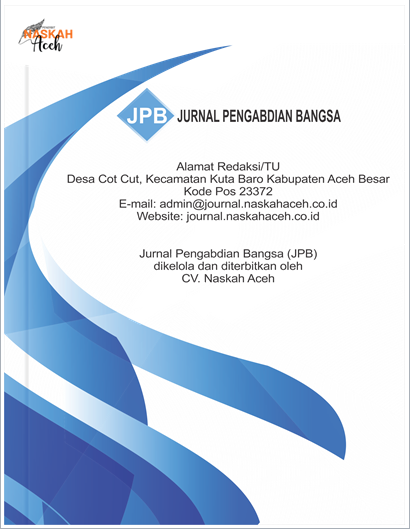THE RELATIONSHIP OF SEA SURFACE TEMPERATURE (SST) TO RAINFALL IN THE WEST WATERS OF ACEH, INDONESIA
Abstract
Rainfall and sea surface temperature (SST) are closely linked in the global climate system. Sea surface temperature affects rainfall through water evaporation, which plays an important role in cloud formation and the hydrological cycle. As sea surface temperature increases, water evaporation also increases, increasing the chance of rainfall in certain regions, especially in the tropics. Conversely, in regions with cooler sea surface temperatures, evaporation decreases, resulting in lower rainfall. This internship aims to gain a deeper understanding of sea surface temperature and rainfall in the western waters of Aceh. This activity was carried out in August-November 2024, which took place at the Class I Sultan Iskandar Muda Meteorological Station office in Kuta Baro, Aceh Besar. The method used is descriptive analysis method, which is by collecting SST data and also rainfall. SST data is processed using GrADS until it can visualize the map. While data from rainfall is taken from BMKG data and processed using Excel. The results of the internship show that there are several factors for rainfall besides SST, in each region including latitude, altitude, wind patterns (trade winds and monsoon), land and water distribution, and mountains and high mountains. These factors greatly influence the variation and type of rainfall. Annual rainfall variations are influenced by global atmospheric behavior, tropical cyclones and others. Warm ocean temperatures in April and May increase air humidity which favors the formation of rain. However, the fluctuating rainfall shows that SST is not the only factor affecting rainfall. In June, while the SST remained high, rainfall was drastically reduced. This suggests that other factors, such as latitude, wind patterns and global atmospheric influences, play a significant role in rainfall variations.
References
Estiningtyas, W.E., Surmaini, S. & Ramadhani, F. (2005) Penggunaan metode filter Kalman untuk prakiraan curah hujan di sentra produksi. Laporan akhir penelitian. Balai Penelitian Agroklimat dan Hidrologi.
Hendon, H.H. (2003) 'Indonesian rainfall variability: Impacts of ENSO and local air–sea interaction', Journal of Climate, 16(11), pp. 1775–1790. Available at: https://doi.org/10.1175/1520-0442(2003)016%3C1775:IRVIOE%3E2.0.CO;2
Ilhamsyah, Y., Mahera, U. & Oktavina, C. (2023) 'Pengaruh suhu muka laut terhadap awal masuk musim hujan di wilayah utara-timur Aceh', Jurnal Lingkungan Almuslim, 2(2).
Lestari, R.E., Putri, A.R. & Nugraheni, I.R. (2017) 'Analisis korelasi suhu muka laut dan curah hujan di stasiun meteorologi maritim kelas II Kendari tahun 2005–2014', dalam Prosiding SNFA (Seminar Nasional Fisika dan Aplikasinya), Vol. 2, pp. 192–200.
Prasetya, R. (2011) Analisis curah hujan akibat siklon tropis Nangka, Parma, dan Nida di Sulawesi Utara. Skripsi. Universitas Sam Ratulangi.
Trenberth, K.E. (2011) 'Changes in precipitation with climate change', Climate Research, 47(1–2), pp. 123–138. Available at: https://doi.org/10.3354/cr00953

















